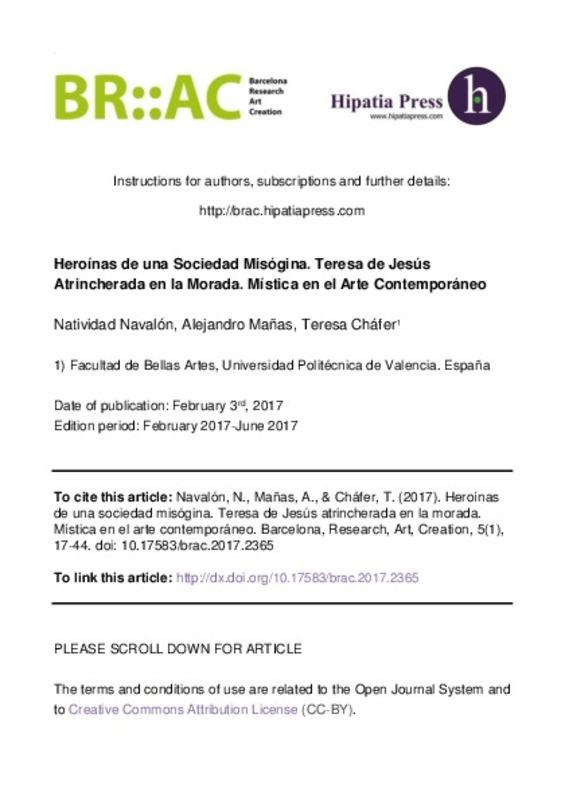JavaScript is disabled for your browser. Some features of this site may not work without it.
Buscar en RiuNet
Listar
Mi cuenta
Estadísticas
Ayuda RiuNet
Admin. UPV
Heroínas de una Sociedad Misógina. Teresa de Jesús Atrincherada en la Morada. Mística en el Arte Contemporáneo
Mostrar el registro completo del ítem
Mañas-García, A.; Chafer Bixquert, T.; Navalón Blesa, N. (2017). Heroínas de una Sociedad Misógina. Teresa de Jesús Atrincherada en la Morada. Mística en el Arte Contemporáneo. Barcelona Investigación Arte Creación. 5(1):17-44. https://doi.org/10.17583/brac.2017.2365
Por favor, use este identificador para citar o enlazar este ítem: http://hdl.handle.net/10251/103624
Ficheros en el ítem
Metadatos del ítem
| Título: | Heroínas de una Sociedad Misógina. Teresa de Jesús Atrincherada en la Morada. Mística en el Arte Contemporáneo | |
| Otro titulo: |
|
|
| Autor: | ||
| Entidad UPV: |
|
|
| Fecha difusión: |
|
|
| Resumen: |
[EN] Este artículo es el primero de una serie de reflexiones en las que nuestro objetivo principal es la recuperación del espacio que no debió perder nunca la mujer. En él hacemos una revisión de aquellas mujeres heroínas, ...[+]
[ES] This article is the first in a series of reflections in which our main objective is the recovery of space that should never lose women. We review those heroines women in a misogynist society, who have been influential ...[+]
|
|
| Palabras clave: |
|
|
| Derechos de uso: | Reconocimiento (by) | |
| Fuente: |
|
|
| DOI: |
|
|
| Editorial: |
|
|
| Versión del editor: | https://doi.org/10.17583/brac.2017.2365 | |
| Tipo: |
|









